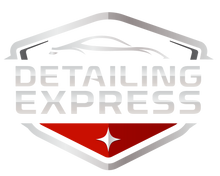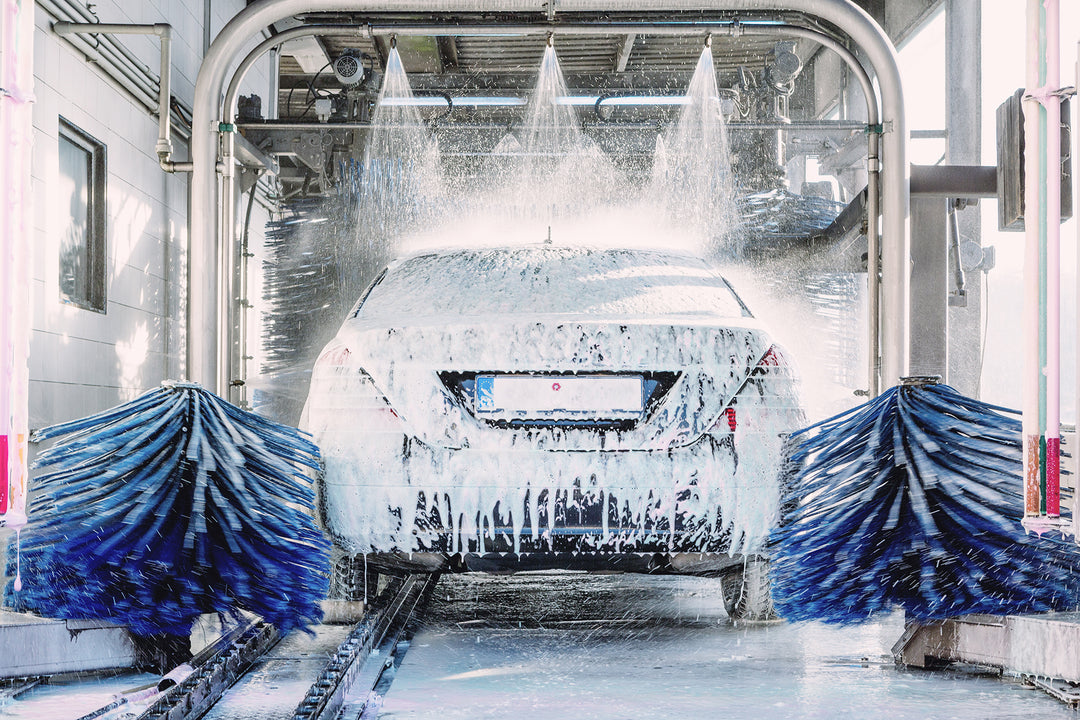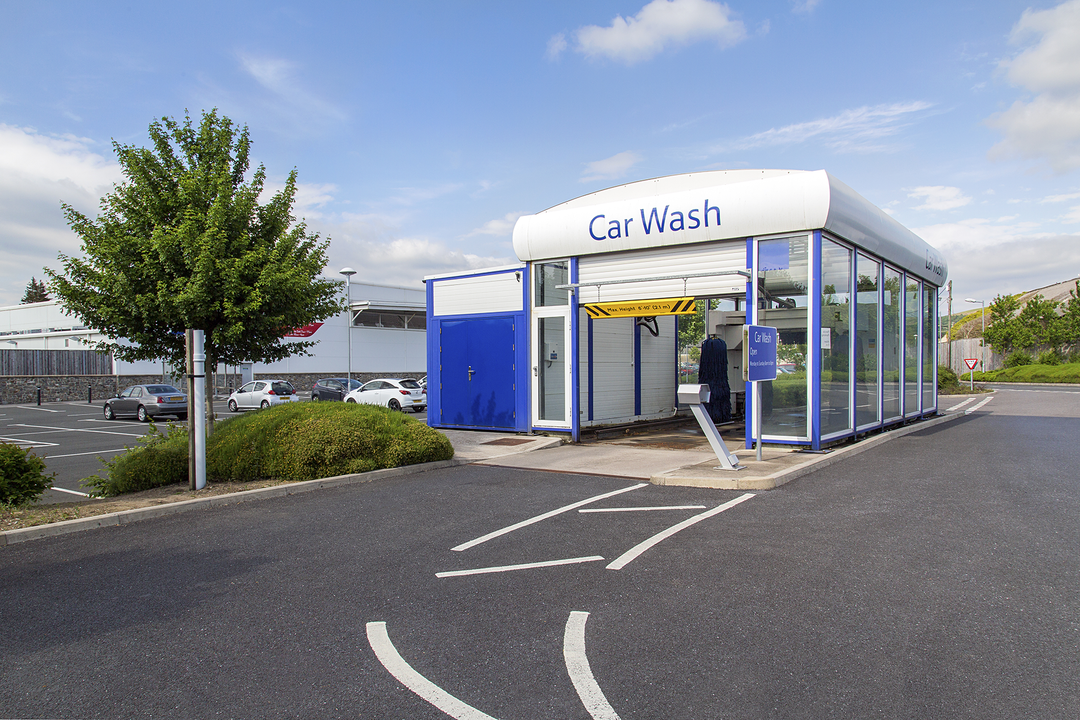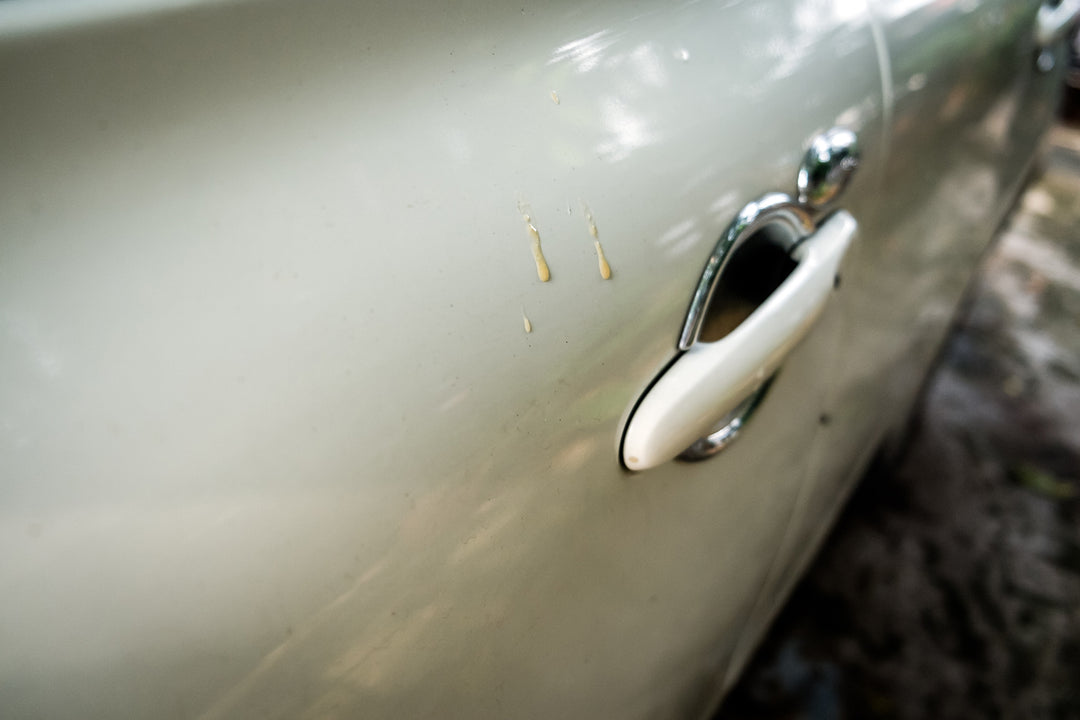How to Wash Your Car Like a Pro in 10 Steps
- Posted on:


Washing your car might seem like a basic task, but doing it the right way can make a world of difference. In this guide, we will cover the 10 essential steps to wash your car like a pro, ensuring a spotless and shining result. As the new editor for Detailing Express, I was grateful to gather some tips from the owner himself Courtney who said it best:
"The best way to wash your car really depends on the individual. However, there are some factors that you always have to keep in mind. Whether you're using the two-bucket method, a traditional one-bucket method, or a foam cannon, I highly suggest keeping these factors in mind."
Lets review the best recommended steps.
Gather the Necessary Tools and Supplies
To wash your car like a pro, it's crucial to use the right equipment and supplies. Many car owners often underestimate the importance of using high-quality tools for car washing. Using the best car wash products will ensure the protection of your car's paint and its overall appearance.
Here's a list of essential car cleaning tools and supplies that you'll need:
- Car wash shampoo: Using a specially formulated car wash shampoo is crucial to protect your car's finish. Avoid using household detergents, as they can be harsh on your car's paint.
- Two buckets: One bucket should be filled with soapy water, while the other should contain clean water for rinsing your wash mitt. This two-bucket system will help you avoid reintroducing dirt back onto your car.
- Wash mitt: Choose a high-quality microfiber wash mitt or lamb's wool mitt, as they are gentle on your car's paint surface and effectively remove dirt without causing swirl marks.
- Wheel brush: A dedicated wheel brush is essential for cleaning your car's rims and wheel wells. It will help you reach those hard-to-access spots without causing damage to other surfaces.
- Microfiber towels: You'll need several clean microfiber towels for drying and polishing your car. These towels are gentle on your car's paint and effectively absorb water without leaving streaks or scratches.
- Glass cleaner: A good-quality glass cleaner is necessary for streak-free windows and mirrors. This will enhance your vehicle's appearance and ensure better visibility while driving.
- Car wax or polish: Applying a layer of car wax or polish after washing will protect your car's paint and give it a glossy finish. Choose a product that is appropriate for your car's paint type and follow the manufacturer's instructions.
- Clay bar kit: A clay bar kit can be used to remove stubborn surface dirt and contaminants from your car's paint. This step is optional but can significantly improve your car's finish.
- Tire cleaner and dressing: Tire cleaner will help you remove dirt and grime from your tires, while tire dressing will give them a shiny, new-car look.
- Foam gun or foam applicator: These tools help you evenly distribute car wash solution, making the cleaning process more efficient.
These items will help ensure a thorough, gentle, and efficient car wash. Now that you have collected all the necessary tools and supplies, you're ready to start washing your car like a pro.
Step 1: Park in the shade
Find a shaded area to park your car before starting the washing process. Direct sunlight can cause the water and soap to evaporate quickly, leaving streaks and water spots on your car's surface.
When planning to wash your car, it's essential to find a shaded area to park before starting the washing process. Parking your car in the shade helps maintain the car's surface temperature at a lower level, allowing the soap and water to work effectively. When you wash your car in direct sunlight, the water and soap can evaporate quickly, causing streaks and water spots on your car's surface.

To wash your car like a pro, always choose a shaded area, such as under a tent or in the shadow of a building. This simple step will make a significant difference when you wash your car, as it helps prevent water spots and ensures the soap is working efficiently to remove dirt and grime.
Furthermore, when you wash your car in the shade, it provides a more comfortable environment for you, as working under the scorching sun can be exhausting. Washing your car in the shade also offers additional benefits, such as protecting the car's paint from potential sun damage, which can lead to fading and oxidation.
So, next time you plan to wash your car, remember the importance of finding a shaded spot to park. By doing so, you'll be taking the first crucial step to wash your car like a pro, achieving a cleaner and more attractive vehicle in the process. Not only will you wash your car more effectively, but you'll also protect its appearance and value in the long run.
Step 2: Rinse your car
Begin by rinsing your car with a hose to remove loose dirt and debris. Be sure to use a gentle spray nozzle setting to avoid damaging your car's paint. Focus on one section at a time, working from the top to the bottom.
To effectively wash your car, it's crucial to start by rinsing your car with a water hose to remove loose dirt and debris. This initial step helps ensure that when you wash your car with soap and water, you're not just spreading dirt around the surface, which could potentially scratch your car's paint.
When preparing to wash your car, choose a gentle spray nozzle setting on your hose to avoid damaging your car's paint. As you wash your car, keep in mind that using a high-pressure setting could cause damage, especially if the car's paint is already compromised.
Step 3: Clean the wheels and tires
Before washing the body of your car, clean the wheels and tires using a wheel cleaner and a separate sponge or brush. This will prevent dirt and brake dust from being transferred to the rest of your vehicle.
According to Family Handyman, a recommended method is to use warm water, a gentle soap, and a brush with bristles that are medium to soft, to scrub the surface of the tire..
Step 4: Mix the car wash soap
To wash your car properly, it's essential to prepare the right cleaning solution. Begin by filling one bucket with water and car wash soap, following the manufacturer's instructions for the correct soap-to-water ratio. This will ensure that you wash your car using an effective and safe cleaning solution, designed specifically for automotive surfaces.
Fill a secondary bucket with clean water for rinsing your sponge or cloth as you wash your car. This two-bucket method will help prevent cross-contamination of dirt and grime while you wash your car, lowering the risk of scratches and swirl marks on your car's paint. By regularly rinsing your cleaning tool in the separate water bucket, you'll maintain a cleaner washing solution and wash your car more effectively.
Step 5: Apply soap using the two-bucket method
Dip a microfiber cloth or sponge inside the soapy water, and begin washing your car in sections. Start at the top and work your way down to the lower areas, which are usually the dirtiest. Use the two-bucket method, rinsing your cloth or sponge in the clean water bucket before re-soaping to avoid spreading dirt and debris.
Step 6: Rinse the car
Once you have finished washing your car, rinse it thoroughly with your hose, starting from the top and working your way down. Be sure to remove all soap to prevent residue and streaks.
Step 7: Dry the car
To avoid water spots, it's essential to dry your car promptly. Use a clean, dry microfiber cloth or a chamois to gently dry your car's surface. Start at the top and work your way down, following the same pattern as when washing.

Step 8: Wax and polish
Courtney, the owner of Detailing Express, shared his expert advice on the importance of protecting your car's paint and finish: "When we talk about protection, we're referring to a wax, a sealant, or a ceramic coating. These are all different forms of protection. Everyone knows about wax; it's common and has been around for a long time, just like polishes."
He further explained the difference between wax and polish: "The difference between these types of protection and polish is that a polish is used for blemishes, scratches, and removing oxidation to make the car look good. The goal is to bring the clear coat back to the best condition possible, using a combination of a buffer or a polisher."
Courtney emphasized the importance of using a protection layer after polishing: "When it comes to wax, it's a form of protection, just like a sealant and a ceramic coating. They work hand in hand because a polish is used to improve the appearance and smooth the surface, achieving the best mirror shine finish possible. But then you also have to protect it. Using the right type of polish makes a difference, but it's essential to protect the polish; otherwise, it won't last long."
He further highlighted the need for a sealant or protection layer after polishing: "If you've ever used polish on a car, you may have noticed it's thicker than wax. When polishing a car, if you don't apply some type of protection, such as a wax or a sealant, the polish will only last half the recommended time. Regardless of what type of polish you use, it's crucial to have a sealant or some form of protection on top of it."
Based on Courtney's expert advice, once your car is completely dry, applying a coat of wax or sealant is crucial for safeguarding the glossy paint and improving its luster. Choose a high-quality car wax and apply it following the manufacturer's instructions. Buff the wax using a clean microfiber cloth to reveal a glossy finish.
Step 9: Clean the windows and mirrors
Don't forget to clean your windows and mirrors for improved visibility and a polished look. Use a glass cleaner and a clean microfiber cloth to wipe down the windows and mirrors, inside and out. Be sure to avoid streaks by wiping in one direction on the inside and another direction on the outside.
Step 10: Detail the interior
Finally, give your car's interior some attention by vacuuming the seats, floor mats, and carpeting. Wipe down the dashboard, console, and door panels using a cleaner designed for interior surfaces. Don't forget to clean the vents, cup holders, and any other hard-to-reach spots.

Tips for Keeping Your Car Clean
To maintain your car's cleanliness between washes, try the following tips:
- Remove trash and clutter regularly
- Keep a small trash bag or container in your car
- Use a car air freshener to maintain a pleasant scent
- Shake out floor mats to remove dirt and debris
- Wipe down surfaces with a microfiber cloth as needed
Common Car Washing Mistakes to Avoid
As the owner from Detailing Express, Courtney stated:
"Washing your car is not just a process to keep it looking good, but many car soaps have additives or hybrid properties, such as ceramic coating, waxes, and sealants. That's why it's essential to use a car wash-grade soap, whether it's commercial or something you can get from a retailer.· Using household detergents instead of car wash soap."
To maintain your car's appearance and protect its paint, it's essential to know the common car washing mistakes to avoid. Following these car cleaning tips will help you achieve a clean car without causing any damage.
Using the wrong car wash solution: Always use a car wash shampoo specifically designed for automotive paint. Avoid using dish soap or other household cleaning products, as they can strip the clear coat and damage your car's paint.
Not pre-rinsing your car: Before applying soapy water, make sure to pre-rinse your car with free-flowing water to remove loose dirt and debris. Skipping this step can lead to swirl marks and scratches when you start washing with a cleaning mitt.
Washing your car in direct sunlight: Washing your car under direct sunlight can cause the car wash solution to dry too quickly, leading to water spots and streaks. Instead, wash your car in a shaded area or on a cloudy day.
Using a single bucket: Using a single bucket for both soapy water and rinsing can reintroduce dirt back onto your car, causing scratches. Rather than that, it is suggested to apply the two-bucket technique, which involves using one bucket for soapy water and another for rinsing your wash mitt.
Not cleaning your wash mitt or cleaning mitt frequently: Make sure to rinse your wash mitt thoroughly in the rinse bucket after cleaning each section of your car. This will help to prevent transferring dirt back onto the car's surface.
Using a scrub brush or foam brush on your car's paint: These brushes can be too abrasive and cause scratches or swirl marks. Instead, use a microfiber or lamb's wool mitt to gently remove dirt and grime.
Not rinsing your car thoroughly: After washing your car, make sure to give it a final rinse with running water to remove any remaining soap and dirt. Inadequate rinsing can lead to soap residue, which can damage the clear coat.
Wiping your car dry with a dirty or abrasive towel: Always use a clean, soft microfiber drying towel to dry your car. Avoid using old rags, bath towels, or abrasive materials, as they can cause scratches and swirl marks.
Not cleaning the engine bay: The engine bay can accumulate dirt, grease, and grime, which can cause damage over time. Make sure to properly clean the engine bay during a full detail, using the right cleaning solution and tools.
Skipping the drying process: Allowing your car to air dry can lead to water spots and streaks. Instead, use a clean microfiber towel or a leaf blower to dry your car thoroughly.
By avoiding these common car washing mistakes and using the right techniques, tools, and car wash solution, you can ensure your car remains in pristine condition. Remember to be gentle, take your time, and always use high-quality products to protect your car's paint and finish.
In Summary
Washing your car like a pro may require some time, effort, and elbow grease, but the results are worth it. By using the right tools and techniques, you can maintain your car's appearance and protect its paint from damage caused by dirt, bird poop, and other debris. Remember to use separate wash buckets for soapy water and rinsing to avoid reintroducing dirty water onto your car's surface.
It's essential to ensure your car is wet before applying any cleaning solution and to rinse your car thoroughly with cold water after washing to remove any soap residue. Always use a clean microfiber towel or drying towel to dry your car, preventing water spots and streaks. The proper water flow is crucial during the rinsing process, so make sure to adjust the pressure accordingly.
While washing your car may be a time-consuming task, it's crucial to address any dirt and grime, especially after driving on a dusty road or through harsh weather conditions. Don't forget to apply a high-quality carnauba wax after washing to add an extra layer of protection and shine to your vehicle.
By following these steps and avoiding common car washing mistakes, you'll be able to maintain your car's appearance and keep it looking like new for years to come. So, roll up your sleeves, grab that spray bottle, and get ready to wash your car like a pro!
Frequently Asked Questions
Q: How often should I wash my car?
A: It's generally recommended to wash your car every two weeks or so, but this can vary depending on factors like weather, driving conditions, and personal preferences.
Q: Can I use any dish soap to wash my car?
A: It's best to avoid using dish soap, as it can strip away your car's wax and damage the paint over time. Instead, use a soap specifically designed for car washing.
Q: Do I need to wax my car after every wash?
A: While it's not necessary to wax your car after every wash, doing so every few months can help protect the paint and maintain a shiny finish.
Q: What is the two-bucket method?
A: The two-bucket method involves using one bucket for soapy water and a second bucket for clean water to rinse your sponge or cloth. This helps prevent the spread of dirt and debris during the washing process.
Q: Can I use any regular towel to dry my car?
A: It's better to use a microfiber cloth or chamois, as regular towels can leave lint and even scratch your car's surface.





